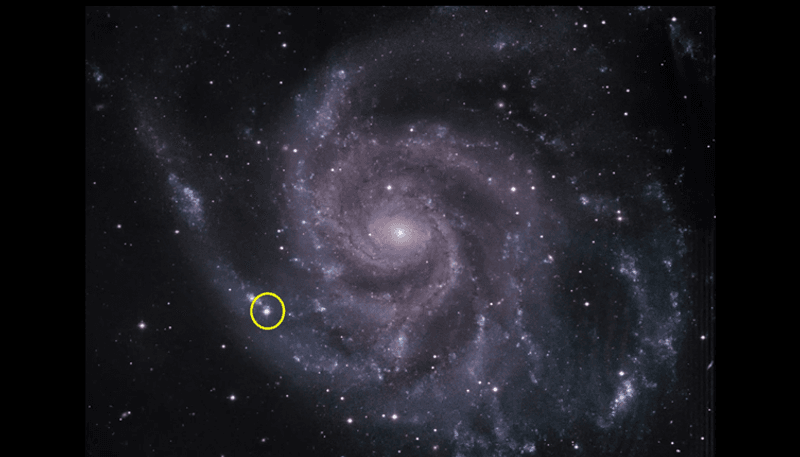An amateur astronomer analyzing thousands of stars in the area the famous Wow! signal came from has proposed a potential Sun-like star as the source of the mysterious signal that occurred over 40 years ago. His likely suspect is described in a new pre-print paper (yet to be peer-reviewed) published on arXiv.
On August 15, 1977, at the Big Ear radio telescope observatory at Ohio State University, a narrowband radio signal was received.
A few days later, astronomer Jerry Ehman reviewed the data and noticed the signal sequence, which lasted for a full 72 seconds. In the margin next to the printout, he simply wrote "Wow!", and thus the puzzling signal had a name that would stick for the next 43 years at least.
The signal has, so far, defied explanation, and that's not for a lack of trying. Researchers argued the case for it being a comet passing through the area Big Ear was listening to, only for that to be completely refuted about two days later by the team that detected the Wow! signal in the first place, as a comet would have produced a diffuse signal given the large area they cover, rather than the abruptly cut-off signal that was received.
The signal has been a source of speculation in the "aliens are out there" community, and not without reason. No other signal like it has been detected before or since. It was in a range of frequencies close to the hydrogen line, which is relatively free from background noise, making it a good range to pick were we to try and communicate with other civilizations ourselves.
On top of that, the team themselves believed it to be a good candidate for extraterrestrial life. "The 'Wow!' signal is highly suggestive of extraterrestrial intelligent origin but little more can be said until it returns for further study," Ohio State University Radio Observatory director John Kraus wrote in a letter to Carl Sagan in 1994, a man you don't want to embarrass yourself in front of with whacky science if you're an astronomer.
In the new paper, Alberto Caballero searched through the European Space Agency's Gaia data – a database of around 1.3 billion stars – for stars in the signal's region that are similar to our own, specifically trying to narrow the search down to stars that might host an exoplanet with potential for life. This type of search wasn't designed to figure out exactly what it is, say if it's from a natural source, but to narrow down the search were it to be from an alien civilization.
As Caballero explains in a video on his popular YouTube page The Exoplanets Channel as well as in his paper, he managed to narrow the candidates down to one star.
"The only potential Sun-like star in all the Wow! signal region appears to be 2MASS 19281982-2640123," he wrote in the paper. "Despite this star is located too far for sending any reply in the form of a radio or light transmission, it could be a great target to make observations searching for exoplanets around the star."
He also found 14 other potential candidates that he was less confident about, given that the luminosity of the stars was unknown.
We can't rule out that the mysterious signal that has puzzled astronomers for four decades wasn't a human-made signal – let's not forget the time another mysterious signal turned out to be a microwave oven – nor that it's coming from some other as yet unknown source. However, looking at the stars he's identified a bit closer couldn't hurt.




